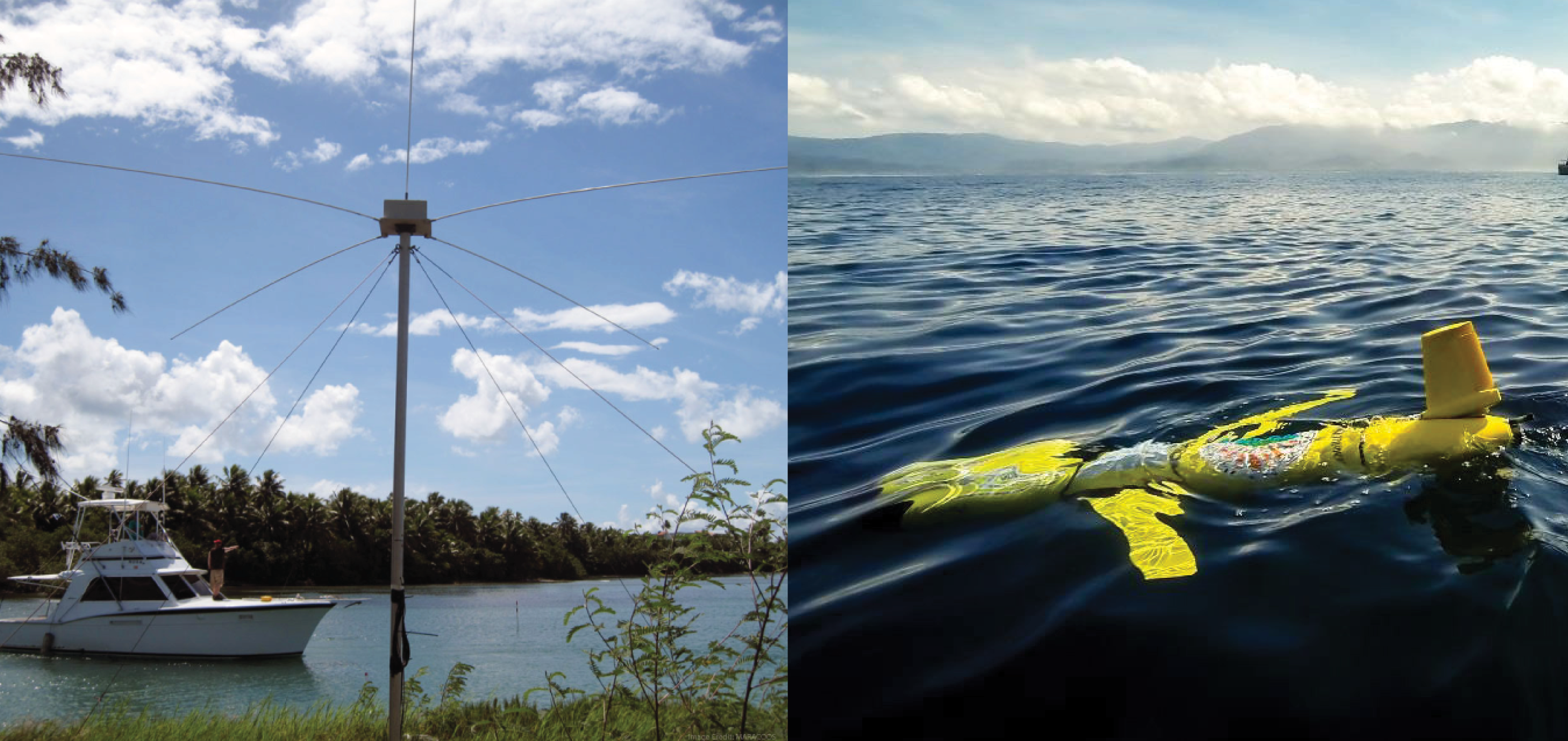
Left image is courtesy of MARACOOS and right image is credited to Ben Hollings, Blue Ocean Monitoring.
The Fiscal Year (FY) 2018 Omnibus Appropriations Act was passed by Congress on March 22, 2018. It included support for many ocean and coastal programs including the Integrated Ocean Observing System (IOOS®).
IOOS regional systems were allocated $35 million, an increase of $4.3 million from FY 17. This support will allow the eleven IOOS regional observing system to fill critical gaps in the High-Frequency (HF) Radar network and underwater glider observatory.
HF radars map the speed and direction of surface currents in real-time. Due to the large coverage area, HF radar data provide valuable input for ocean models and have been used for search and rescue, oil spill response efforts, and fisheries management. For example, the U.S. Coast Guard search and rescue operators use HF radar sea surface current speed and direction data as well as mooring data to initiate the Search and Rescue Optimal Planning System (SAROPS) to better delineate the search area. The integration of HF radar current data into SAROPS has increased the accuracy of the system and helps reduce the size of search and rescue areas, thereby increasing effectiveness of Coast Guard searches.
Gliders are underwater vehicles that relay information about subsurface conditions. In typical use gliders take measurements, such as water temperature, salinity, dissolved oxygen, from the ocean surface to depths of up to 3000 ft (1000m). Deployments of several weeks to up to 6 months are routine. The U.S. Navy estimates that gliders are 1/100th of the cost of ship-collected data. Gliders are revolutionizing ocean observing by being cost-effective, safe, and flexible.
Related news

New High Frequency Radar at the Dry Tortugas National Park Improves Ocean Surface Current Measurements Across the Straits of Florida
A new CODAR Low-Power SeaSonde HFR has been deployed by the University of South Florida at Fort Jefferson on Garden Key to measure surface currents to improve understanding and prediction of the Gulf of Mexico Loop Current.

President Biden Proposes Significant Budget Cuts to IOOS for 2025
President Biden’s recent 2025 budget proposal slashed the funding allocated for the Integrated Ocean Observing System (IOOS) by 76%, which would effectively shut down coastal and ocean observing efforts.

Webinar: NOAA Resources to Help Coastal Communities Understand Flood Risk
Join us Wednesday, March 27th at 12 PM Eastern Time for SECOORA's Coastal Observing in Your Community Webinar Series to hear from Doug Marcy with the NOAA Office for Coastal Management.